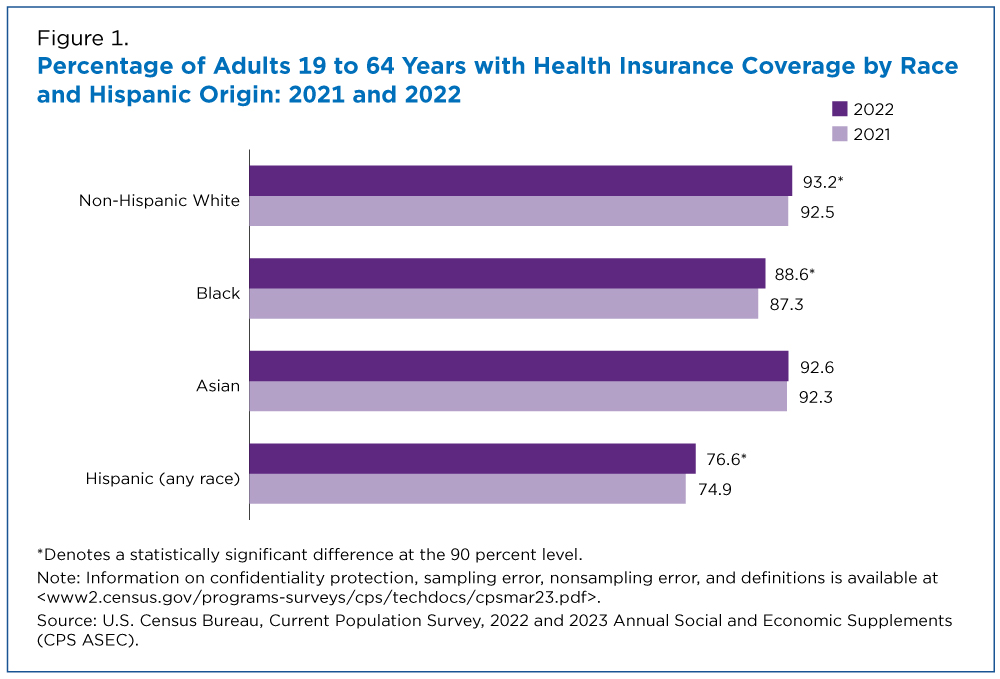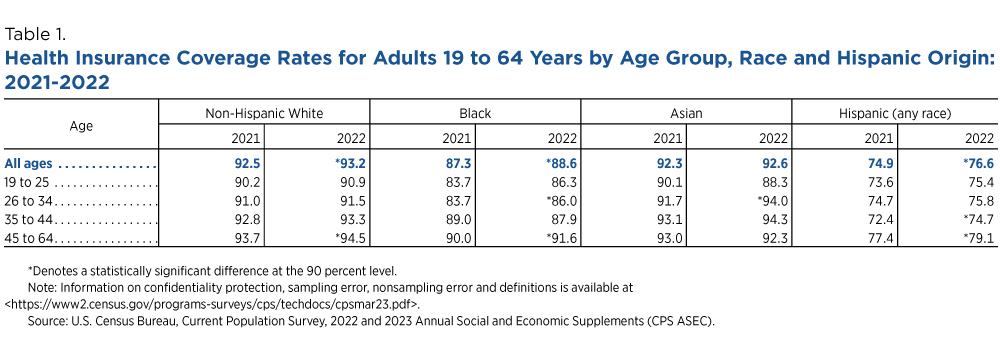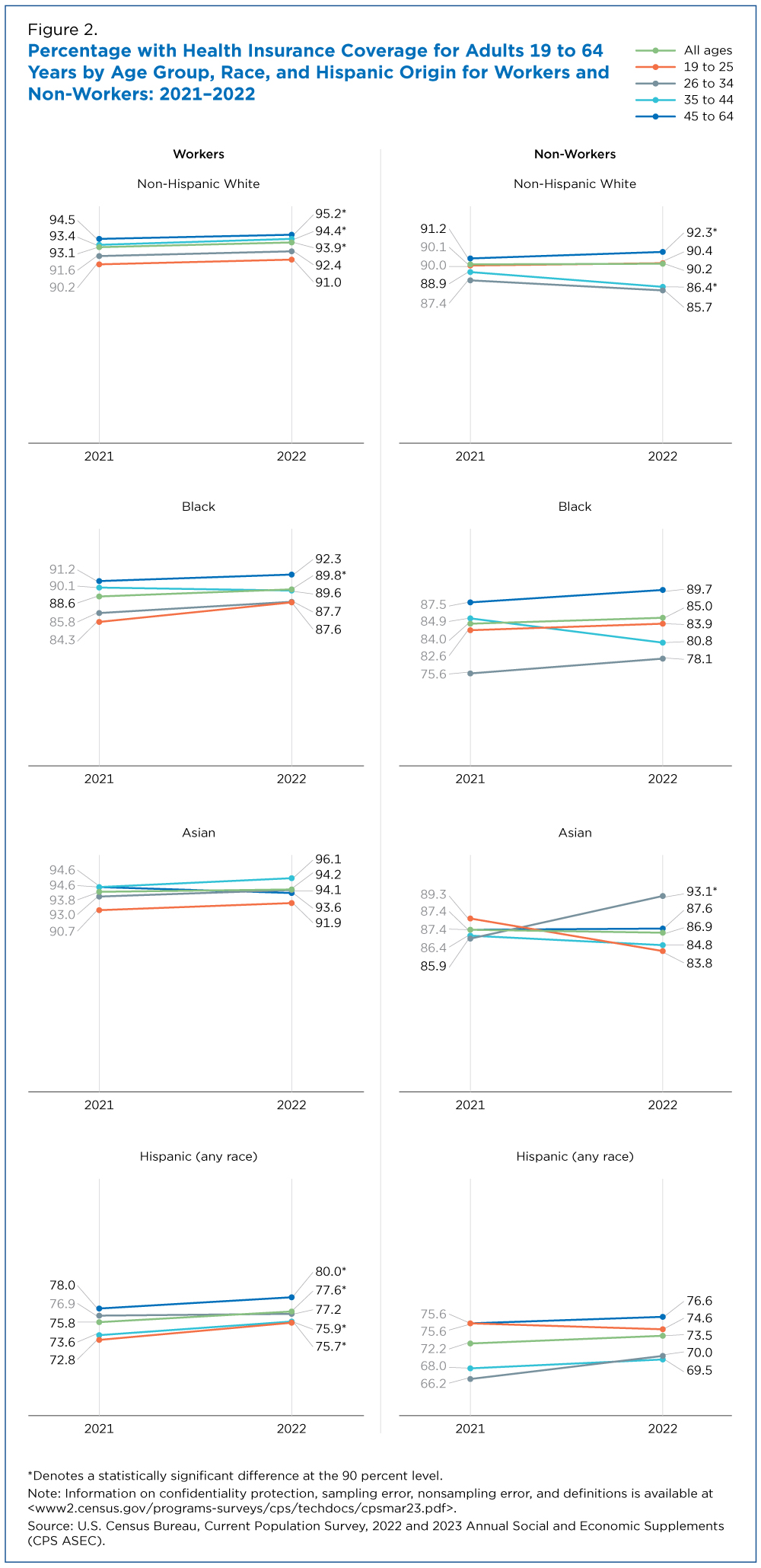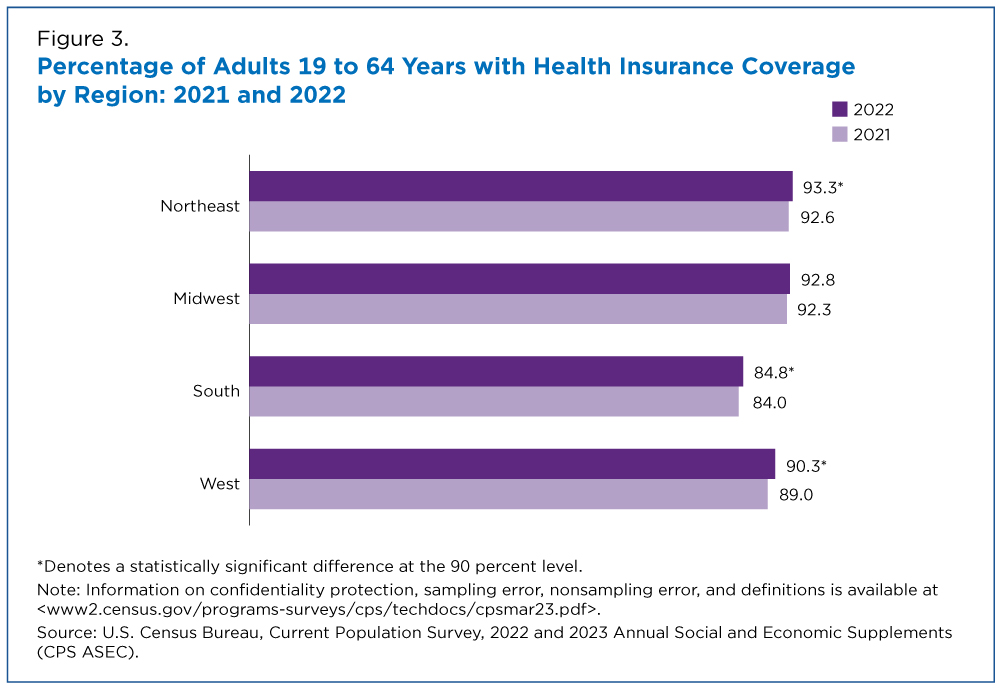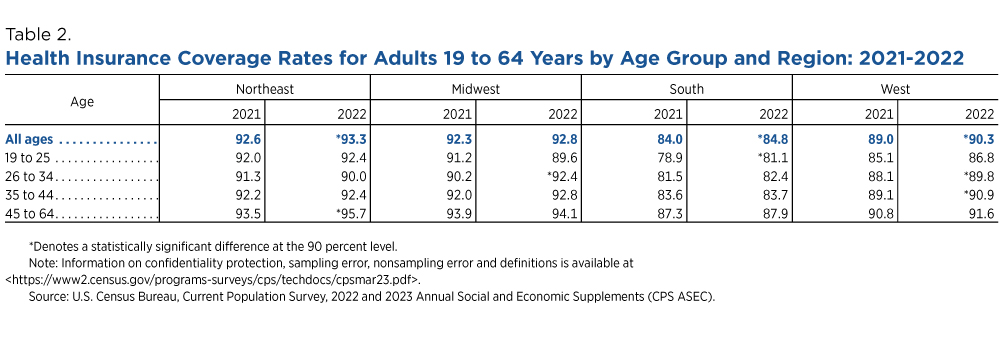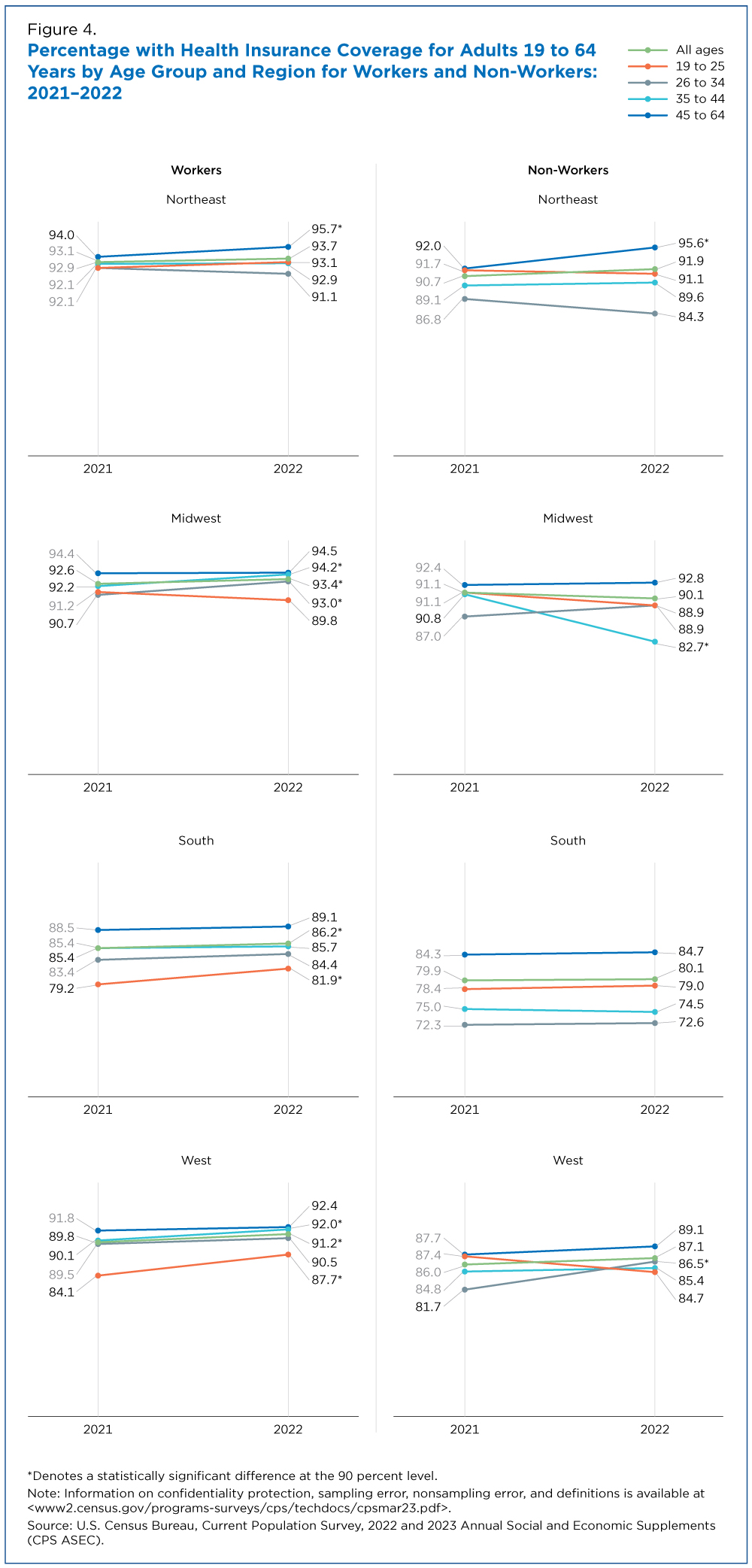Health Insurance Rates for Working-Age Adults Higher by Race, Hispanic Origin, Region
The percentage of working-age adults ages 19 to 64 with health insurance coverage increased from 2021 to 2022, primarily driven by an increase in employment-based coverage. This resulted in uninsured rates dropping from 11.6% to 10.8%, according to U.S. Census Bureau data released today.
Health insurance coverage rates increased in 2022 for Black, non-Hispanic White and Hispanic working-age adults, and the share of these groups employed with health insurance was also higher than in 2021.
The Health Insurance Coverage in the United States: 2022 report shows that the share of working-age adults with coverage rose across many race and ethnic groups, regions and employment status.
Working-age adults generally have lower rates of insurance coverage than those under age 19 and older adults age 65 and over because their coverage is often directly tied to employment. Adults who work less than full-time, year-round may not be eligible for employment-sponsored health insurance coverage.
The report shows health insurance coverage rates in 2022 for all working-age adults and all those who were employed in 2022.
How Insured Rates Differed by Race, Hispanic Origin, Employment Status
Health insurance coverage rates increased in 2022 for Black, non-Hispanic White and Hispanic working-age adults, and the share of these groups employed with health insurance was also higher than in 2021.
Non-Hispanic White Population
The percentage of working-age non-Hispanic White adults with any type of health insurance coverage increased significantly from 92.5% in 2021 to 93.2% in 2022 (Figure 1). The increase was driven by employed individuals who had a coverage rate of 93.9%, up from 93.1% in 2021 (Figure 2).
Workers in the upper age ranges in particular saw significant increases in coverage: up 1.0 percentage point to 94.4% among those ages 35 to 44 and up 0.7 points to 95.2% among those ages 45 to 64. The year-to-year increase was significant for both full-time, year-round workers and those who worked less than full-time, year-round. Table 1 shows health insurance coverage by age group and race and Hispanic origin.
Black or African American Population
The coverage rate of working-age Black adults also increased significantly, from 87.3% in 2021 to 88.6% in 2022. Again, the increase was related to employment status. During this period, the percentage of Black workers with any health insurance coverage increased 1.2 percentage points to 89.8%.
Hispanic Population
Employment again was a factor in the year-to-year improvement in health coverage of working-age Hispanic adults. The share of this group with any type of health insurance coverage increased significantly from 2021 to 2022 (74.9% to 76.6%). The percentage of all Hispanic workers with health insurance coverage increased 1.8 percentage points to 77.6% during this time.
While coverage rates of Hispanic workers in nearly all age groups jumped from 2021 to 2022, they rose the most among youngest workers, climbing 3.0 points to 75.7% for those ages 19 to 25; 2.3 points to 75.9% for workers ages 35 to 44; and 1.9 points to 80.0% for workers ages 45 to 64.
Asian Population
Working-age Asian adults were the only group without any significant increase in health insurance coverage between 2021 and 2022. This was also true for Asian workers in every age category.
Midwest Only Region Without Significant Increase in Health Coverage
Health coverage of working-age adults increased significantly in the Northeast, South and West but increases varied by age and employment status. The Midwest was the only region without a significant increase.
Northeast
Health insurance coverage of working-age adults in the Northeast increased from 92.6% in 2021 to 93.3% in 2022 (Figure 3).
The increase was driven largely by coverage for the oldest working-age group of adults (45-64), which rose from 93.5% in 2021 to 95.7% in 2022 (Table 2). There were significant increases in this age group among both those who were and were not working. The share of those who did not work with any health coverage increased by 3.6 percentage points (Figure 4).
South
Health insurance coverage increased for working-age adults in the South by 0.8 percentage points between 2021 and 2022.
Younger adults ages 19 to 25, in particular, experienced significant increases in coverage: 81.1% in 2022, up from 78.9% in 2021. This increase was driven by those who were employed who saw their rates rise from 79.2% to 81.9%, a 2.8-point increase.
West
Significant increases in coverage for working-age adults in the West were more widespread than in the Northeast and South. The share covered by any type of health insurance increased from 89.0% in 2021 to 90.3% in 2022.
This increase was driven by adults in the middle age ranges. Health coverage among adults ages 26 to 34 went from 88.1% to 89.8% and, among adults ages 35 to 44, it went from 89.1% to 90.9%. The share of workers in the West with health insurance coverage also increased 1.4 percentage points.
Midwest
While the change in the overall health coverage rate of working-age adults in the Midwest was not statistically different between 2021 and 2022, the change for workers was: up from 92.6% in 2021 to 93.4% in 2022.
More information on confidentiality protection, sampling error, nonsampling error, and definitions is available in the technical documentation. All comparative statements in this article have undergone statistical testing and, unless otherwise noted, all comparisons are statistically significant at the 10% significance level.
Related Statistics
Stats for Stories
America Counts Story
Subscribe
Our email newsletter is sent out on the day we publish a story. Get an alert directly in your inbox to read, share and blog about our newest stories.
Contact our Public Information Office for media inquiries or interviews.



